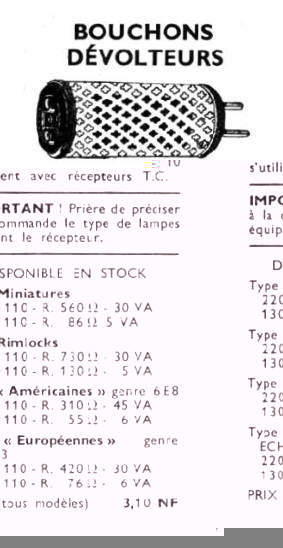.jpg)
|
The left
resistor is a type
YO50, 550
ohms, 50
W, made by
the Belgian
company ADB (Adrien
DeBacker), a
company founded in
1920, still
active in lighting
sytems
for airports.
The middle one is a
French resistance,
suitable for
25 W;
The right one is also
French and -
although physically
larger -
suitable for
20 W. |
|
These resistors
have several drawbacks.
They use a
lot of power and can
become very
hot. Moreover, they
sometimes contain
asbestos and
they do not
fit into
a
rim-earthed
power socket. |
|
It is important to
chose the correct resistor. The output voltage
depends on the
power
required by the connected radio.
If the radio
consumes more power than
indicated
on
the
resistance, it gets less
than 110
volts and
if it uses less power, the device gets
more than
110 volts and that could be dangerous. |
|
These
resistors were
used mainly in
the 50s and
60s of
the last
century. |
|

| French advertisement for a number of
dropping resistors. |
|